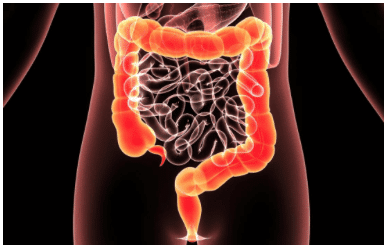During this surgery, the damaged section of the colon is removed and the healthy parts of the colon are reattached.
he colon, which is also called the large intestine, sits inside the abdominal cavity.
It starts at an area of the abdominal cavity called the iliac region and continues up the abdomen and across the width of the abdominal cavity. The colon then travels down the left side and ends at the anus.
One of the primary functions of the colon is to regulate water in the body. The colon absorbs water from the foods a person eats. It also absorbs certain vitamins and processes waste.
However, the colon can be damaged by trauma or disease, including:
- cancer of the bowel
- ulcerative colitis
- Crohn’s disease
- polyps or growths
- diverticulitis
If colon cancer develops, surgery is often recommended to remove the tumor or part of the large intestine.
In instances of bowel disease, surgery may be needed to remove the diseased or damaged section of the large intestine.
During a hemicolectomy, only one side of the colon is removed. The side of the colon removed depends on the location of the tumor or diseased intestine.
Part of the colon can be removed without affecting a person’s ability to digest food.
How is a hemicolectomy performed?
A hemicolectomy can be performed either laparoscopically or using open surgery.
Laparascopic procedure: When surgery is done laparoscopically, a surgeon makes small incisions in the abdominal wall and inserts a thin scope. The scope has a lens and light for viewing purposes.
The doctor will also insert surgical instruments through the small cuts in the abdomen.
If the procedure cannot be performed laparoscopically, open surgery will be required.
Open surgery: An open hemicolectomy involves making longer cuts to access the colon. Since the cuts are larger with an open procedure, recovery may be longer.
The colon is composed of three parts: the ascending colon, which attaches to the small intestine, the descending colon, which attaches to the rectum, and the transverse colon, which is located between the ascending and descending colon.
Types of hemicolectomy
A hemicolectomy may involve removing a portion of the colon on the right or left side, depending on the location of the cancer or diseased bowel.
If a right hemicolectomy is done, the ascending colon is removed. The transverse colon is then attached to the small intestine.
During a left hemicolectomy, the descending colon, the section of the colon attached to the rectum, is removed. The transverse colon is then attached to the rectum.
Preparation for a hemicolectomy will vary, depending a person’s overall health and the medications they take.
Typically, a doctor will perform preoperative tests to make sure a person is an appropriate candidate for a hemicolectomy. These include an electrocardiogram (EKG) and blood tests.
A person may be asked to stop taking certain medications, such as blood thinners, for a specific amount of time before the surgery. However, it is essential only to stop medications when instructed by a doctor.
People will need to fast for 12 hours before their procedure. Bowel prep, which involves taking a laxative to clean out the colon, may also be required.
Post-surgery diet
In some cases, once a section of colon is removed, the individual notices very little change in their digestion. However, some people experience cramps or diarrhea. In these cases, a doctor might recommend drinking more water and eating certain foods to help control bowel movements; these can include:
- applesauce
- yogurt
- potatoes
- pasta
- bananas
- cheese
- fiber-rich foods
- fiber supplements
- oatmeal
- mild teas
Risks and complications
A hemicolectomy can be an effective treatment for diseases such as colon cancer. But as with any surgery, there are risks involved.
While it may not be possible to prevent all complications, following the doctor’s recommendations after the procedure may decrease the risks.
Here are some possible complications of a hemicolectomy:
Excessive bleeding
If a person has an open hemicolectomy instead of laparoscopic surgery, there is a higher chance of excessive bleeding
In some cases, a transfusion may be needed to treat blood loss.
Internal injury
During the procedure, damage to the bladder or surrounding organs can occur. Depending on the extent of the damage, additional surgery may be required or recovery may be delayed.







